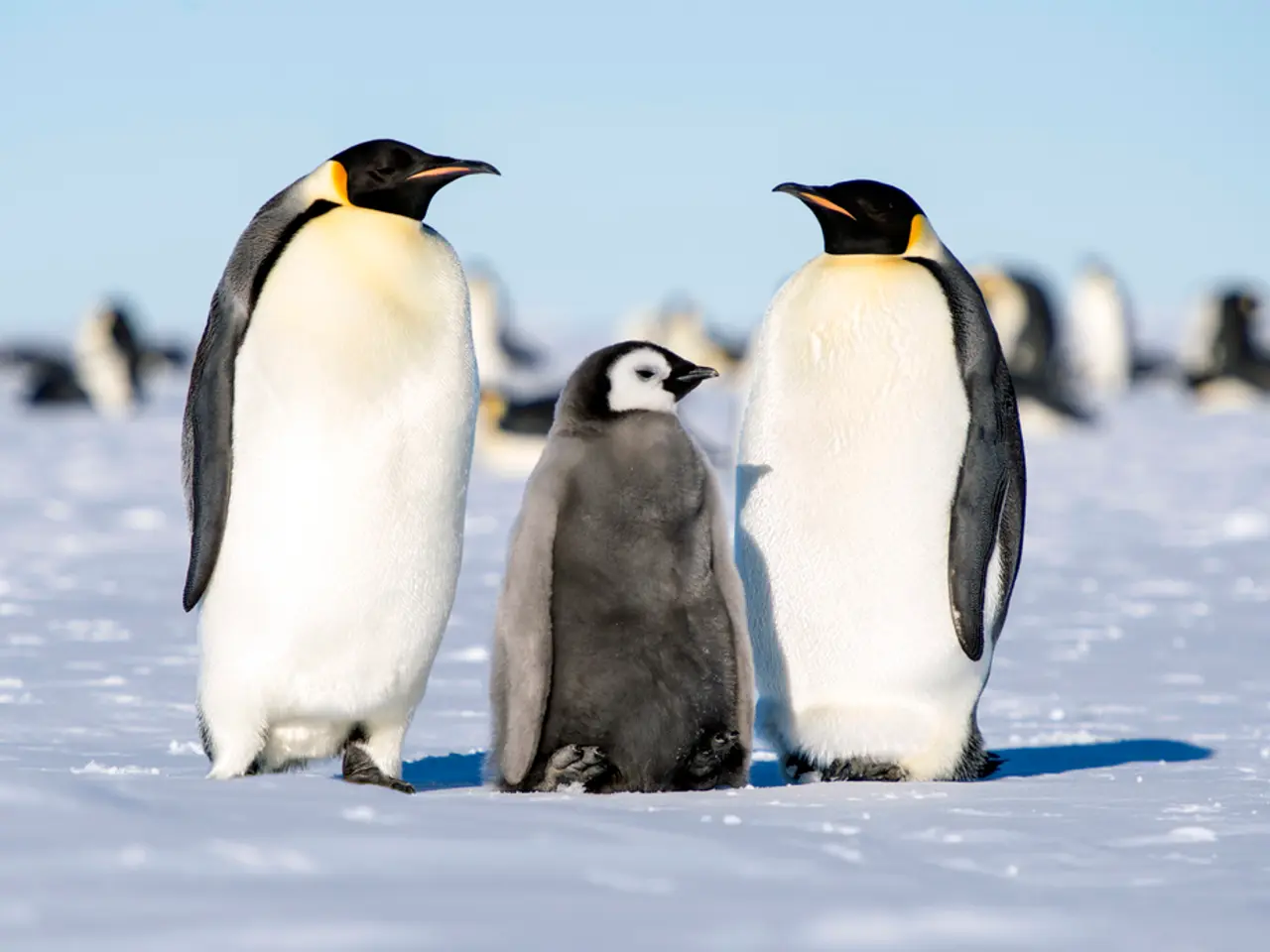Researchers Discover Arctic Algae Able to Traverse Ice at Minus Fifteen Degrees Celsius
In a pioneering study published in the Proceedings of the National Academy of Sciences, researchers have discovered that Arctic diatoms, tiny algae crucial to the polar food web, possess a unique and intricate mechanism for movement that allows them to navigate the rapidly changing Arctic environment.
The study, led by Qing Zhang, a postdoctoral scholar at Stanford University, was conducted aboard the research vessel Sikuliaq in the Chukchi Sea, a region of the Arctic Ocean. During a 45-day summer expedition, the team collected ice cores containing Arctic diatoms, primarily from the genus Navicula.
These diatoms are embedded in a slippery, protein-rich secretion called mucilage, which functions as a 'rope' for their movement. Much like snail mucus, diatoms secrete a polymer that adheres to the surface and serves as a means for propulsion.
The researchers, using tiny fluorescent beads, mapped the forces diatoms generate as they glide through the ice. Their findings revealed that Arctic diatoms move nearly ten times faster on ice at freezing temperatures compared to their relatives in temperate climate zones.
This rapid movement is made possible by the presence of the same molecular machines that power human muscles: actin and myosin. These proteins, embedded within the mucilage, contract and relax in a coordinated manner to propel the diatoms forward.
Arctic diatoms also show a unique adhesion to icy surfaces, which may involve specialized ice-binding proteins, or IBPs/AFPs. These proteins allow the diatoms to inhabit specific microzones within the ice, where they find optimal light and salinity conditions.
The discovery of diatom mobility could have significant implications for understanding the flow of nutrients and energy in one of Earth's most extreme environments. However, budget cuts for polar research could limit infrastructure and tool development, potentially leaving entire microbial worlds uncharted.
The study's findings could also influence ice formation and melting in the Arctic. As the Arctic warms faster than any other place on Earth, many projections suggest it could be ice-free in summer within the next 25 to 30 years. A better understanding of diatom behaviour could help scientists predict and mitigate the effects of this rapid change.
The study was conducted in the Chukchi Sea, a region that is home to a diverse range of Arctic diatoms. These microscopic organisms play a crucial role in the polar food web, forming the base of an ecosystem that sustains various species, including krill, seals, and polar bears.
As we continue to explore and understand the complex world of Arctic diatoms, we gain valuable insights into the resilience and adaptability of life in the face of extreme environmental changes. The study serves as a reminder of the importance of ongoing research and the need to support polar exploration and scientific discovery.
Read also:
- Hospital's Enhancement of Outpatient Services Alleviates Emergency Department Strain
- Increased Chikungunya infections in UK travelers prompt mosquito bite caution
- Kazakhstan's Deputy Prime Minister holds discussions on the prevailing circumstances in Almaty
- In the state, Kaiser Permanente boasts the top-ranked health insurance program






